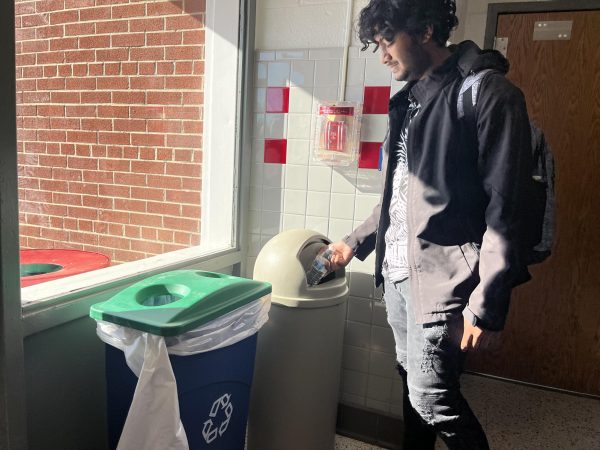Discovery of a lifetime
Enceladus, a moon of Jupiter, is an “ocean world” that could support life.
Over 500 years ago, humans believed that Earth was the center of the universe. Without the necessary technology to discover the truth, we lived in ignorance about our place among the stars.
Thankfully, science has come a long way since then. The heliocentric model, in which Earth is one of the planets revolving around the Sun, was proposed by Copernicus in 1543.
Fast forward to the present day, where the National Aeronautics and Space Administration (NASA) announced on April 7 that finding alien life in the near future is highly likely.
“I believe we are going to have strong indications of life beyond Earth in the next decade and definitive evidence in the next 10 to 20 years,” chief NASA scientist Elizabeth Stofan said.
Extraterrestrial life has been featured in countless science fiction films such as E.T. and Star Wars, making the whole possibility of finding aliens seem a little far-fetched.
However, Stofan made it clear that when NASA finds alien-life, it will not be in the form of the stereotypical “little green men.” It will most likely be little microbes.
This is a disappointment, since I spent a good part of my childhood watching the best sci-fi bollywood film of all time, Koi Mil Gaya, and waiting for the main character, a blue alien creature named “Jadoo” to show up on my doorstep.
One of the reasons NASA scientists feel that they are on the brink of discovery is because they are convinced of the prevalence of water in other places around the Solar System. These “ocean worlds” tend to be moons of the four giant planets in the outer regions of our Solar System: Jupiter, Saturn, Uranus and Neptune.
Most of the liquid water on these ocean worlds is predicted to exist as subterranean oceans.
For example, scientists suspect that on Enceladus, a moon of Jupiter, there is a reservoir of water six miles deep at its south pole. Water from this reservoir sprays out from fissures in the moon’s surface, creating impressive jets.
Alien life is more likely to exist in these types of dynamic oceans. These ocean worlds tend to be very far away from the Sun, so what is generating the heat to maintain liquid oceans?
The answer is not as obvious as you might think. The strong gravitational force from large planets like Saturn and Jupiter is keeping some of their moons just warm enough maintain liquid oceans beneath the surface.
Though water is a key indicator for life, most people don’t realize that sunlight is not essential for it. According to the National Science Foundation, some of Earth’s most basic life-forms exist in deep-sea communities that use chemical energy instead of sunlight to survive.
Hydrogen-sulfide molecules can be converted to chemical energy at deep-sea hydrothermal vents, where bacteria tend to gather. Similar scenarios could be occurring on other worlds in our Solar System at this very moment, since hydrothermal vents are a common phenomenon.
Though life in the form of deep-sea microbes does not sound like much, it holds a promise of grander things. Long before the human species evolved, bacteria was the only form of life on Earth.
Still around today, these organisms provide nutrients to other organisms at the bottom of the food chain. Since humans are the world’s top predator, your stomach is its own little world of microbial life that you have consumed through your food.
Life comes from life. That’s something we learn in our freshman biology classes. So even though the life that NASA expects to discover might not look anything like us, there is still hope that it could evolve into sentient life forms.
If that time comes, I sincerely hope that human beings will have survived to greet our new neighbors and communicate that they are not alone. After all, we know how it feels to stare up at the stars with questions about our place among them.

Sarah Metzel is the current Editorals Editor of The A-Blast. She joined the staff sophomore year as a staff writer.
Metzel was accepted into the Young...












